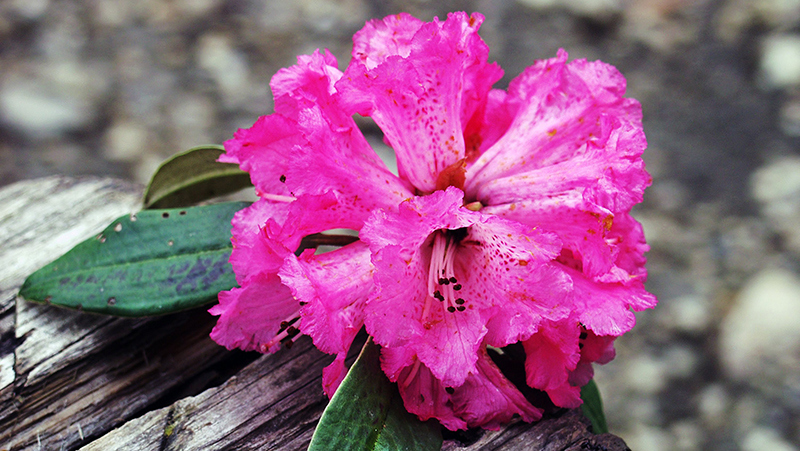Yates Account
Join now
Create a Yates account today!
Sign up to join the Yates Garden Club for monthly e-mails packed with seasonal inspiration, tips for success & exclusive promotions.
Plus if you’re a Garden Club member you can take part in the Yates Growing Community - a blog to share successes, get advice & win prizes in fun challenges along the way!

Forgot password
Enter the email address associated with your account, and we'll email you a new password.

Rhododendrons (or rhodos) are spectacular spring flowering shrubs or trees that are suited to mild to temperate and cold climates. These plants are closely related to azaleas and come in many varieties and colours. Warm climate rhododendrons have become readily available and are often called ‘vireya’. These varieties however, prefer rainforest-type conditions with moderate temperatures, good watering and perfect drainage.
How to grow rhododendrons in a garden
- Choose a well-drained spot in the garden that gets dappled sunlight during the day and protection from the afternoon sun.
- Enrich the soil with some compost and Yates Thrive Natural Blood & Bone with Seaweed before planting.
- Dig the planting hole twice as wide and to the same depth as the root-ball. Remove the shrub from the container, gently tease the roots.
- Position in hole and backfill with soil, gently firming down. Form a raised or doughnut-shaped ring of soil around the outer edge of the plant's root zone. This helps keep water where it's needed. Always water in well after planting to settle the soil around the roots and keep the soil lightly moist for several weeks while the new plant establishes.
- Mulch around the base with organic mulch like bark chips, woodchip or pea straw, keeping it away from the trunk.
- Feed every 6-8 weeks with Yates Thrive Rose & Flower Granular Plant Food. TIP: For an added boost, apply Yates Thrive Natural Fish & Seaweed+ Plant Food Concentrate.

How to grow rhododendrons in a pot
- Choose a dwarf variety and pot that has adequate drainage holes and is double the size of the selected plant. Place it in a position that gets dappled sunlight during the day and protection from the afternoon sun.
- Fill the pot with quality potting mix, such as Yates Premium Potting Mix.
- Remove the shrub from the container, gently tease the roots.
- Position in hole and backfill with potting mix, gently firming down. Water in well.
- Feed regularly during the growing and flowering season with Yates Thrive Roses & Flowers Liquid Plant Food. TIP: For an added boost, apply Yates Thrive Natural Fish & Seaweed+ Plant Food Concentrate.
Growing tips
- Rhododendrons like slightly acidic soil with a pH of around 5. To achieve this you may need to apply Yates Soil Acidifier Liquid Sulfur to lower the pH of the soil.
- Rhododendrons grow quite slowly and don’t require too much fertiliser. Using a slow-release fertiliser such as Yates Thrive Rose & Flower Granular Plant Food will give them just the right amount of nutrients that they need to grow.
- Rhododendrons are not recommended for planting in kid's gardens as the plant is poisonous if consumed.
- Vireya rhododendrons differentiate themselves from the Himalayan varieties by their glossy leaves, long flowering period and unusual colours. Many of the vireya flowers come in shades of orange and salmon as well as the more traditional rhododendron pink and white.
- Vireyas don’t produce the massed show that’s so typical of the cold climate rhodos, but unlike their spring-blooming cousins, they continue flowering over many months.
- ‘Sir Robert Peel’ (deep pink) and ‘Broughtonii’ (crimson) are two cultivars that grow in reasonably warm areas.
Orange trumpet vine, with its brilliant cascading masses of orange tubular flowers, is one of the most spectacular winter flowering climbers.
Spring Stars
Spring Stars are a versatile addition to any garden with delightful lavender-blue, star shaped blooms.
Flax
Flaxes (Phormium spp.) are highly versatile plants which don't mind swampy or dry conditions. Great for large pots or planted en-masse in garden beds.
Proteas
Not just any old blossom, protea flowers are blooms with attitude. If you can give them full sun and reasonable drainage, proteas will love you.
Recommended products
Yates Thrive Natural Blood & Bone with Seaweed
A certified organic garden input boosted with NZ Seaweed to gently nourish plants, enrich the soil and encourage a strong healthy root system.
Yates Thrive Rose & Flower Granular Plant Food
Specially formulated to grow all types of flowers. With high potassium for large & abundant flowers, added calcium & iron for stronger flowers.
Yates Premium Potting Mix
A premium potting mix, ideal for all potted plants and shrubs, including ornamentals, fruit trees, vegies and herbs.
Yates Thrive Natural Fish & Seaweed+ Plant Food Concentrate
A complete plant food enriched with natural fish, seaweed, humates, molasses and more - boosted with NPK to improve plant and soil vitality.
















Share
Share this article on social media